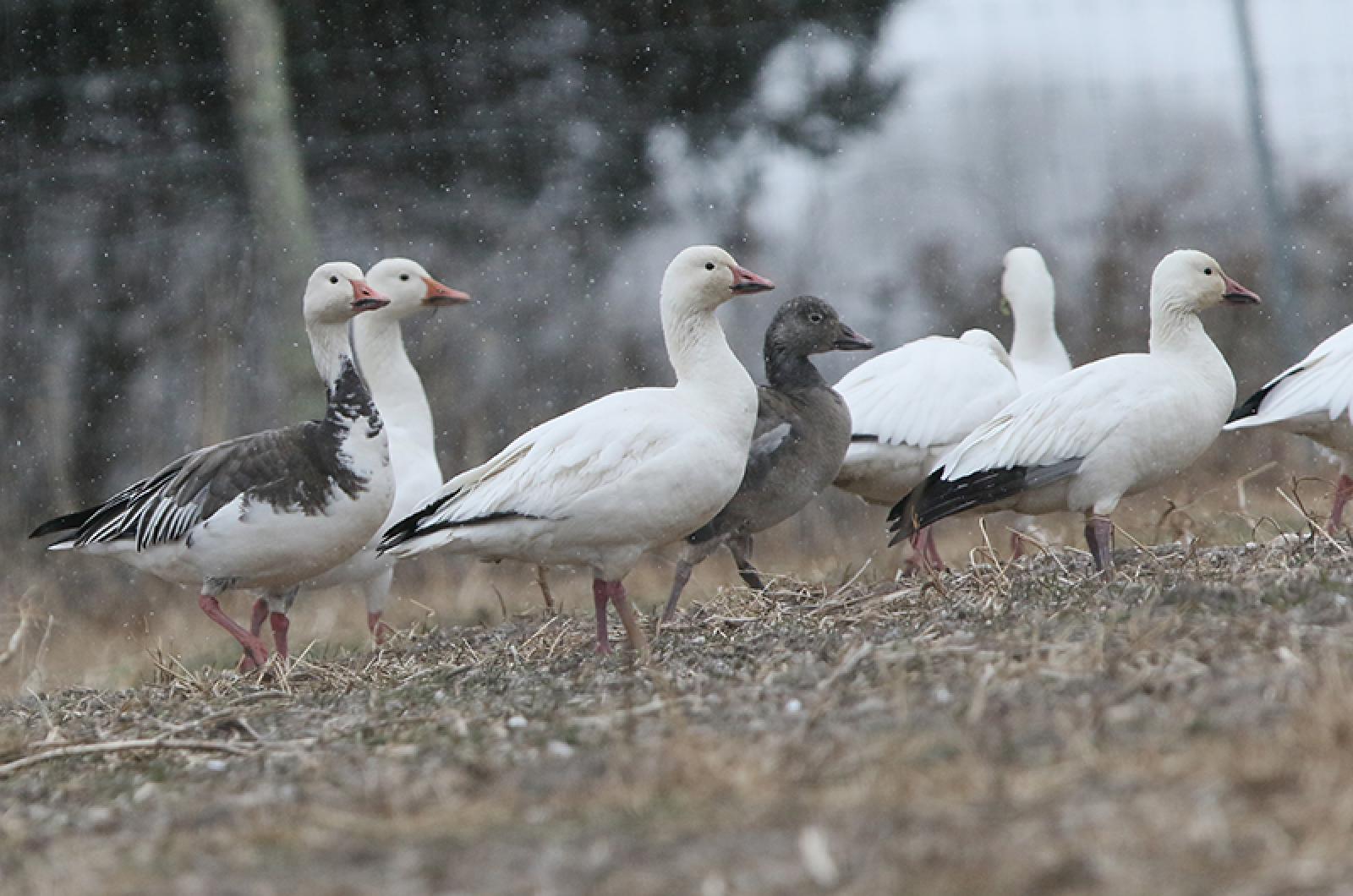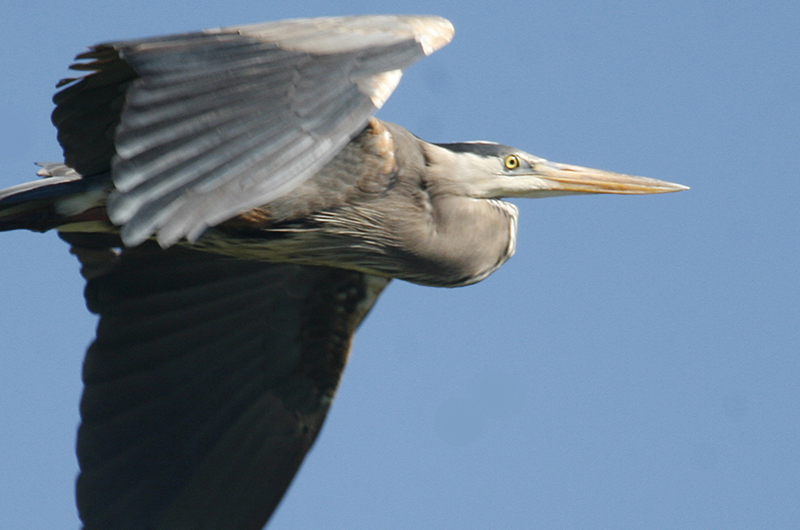Snow geese have not been seen on the Island this winter or last fall. We never get a lot of them, but we usually get a couple of reports every year. On Feb. 25 Olsen Houghton was excited to find three snow geese mixed in with Canada geese at Misty Meadows Farm. The next day, Maria Thibodeau spotted six of them at the high school. And about that time some snow geese showed up on Nantucket, along with a blue phase of snow goose, which used to be a separate species called blue goose.
We must ask whether these snow geese are wild migrants or whether they are part of Gus Ben David’s flock of captive but full-winged snow geese — a flock that includes several blue geese. Mr. Ben David reports that his flock flies off at times, and will fly around the Felix Neck area, sometimes at very high altitudes. Occasionally, the flock lands elsewhere, especially on the high school’s athletic fields, and excited people report the sighting. He also reports that his flock stays together and seldom breaks up onto smaller groups. Because of this, these three different sightings of flocks of snow geese are wild migrants.
It is about time this species showed up!
Bird Sightings
Laurie Meyst was excited to report two pine warblers showed up at her feeders on March 3. The question to ask is whether they are migrants or over-wintering birds. Since migrants are not expected until mid-April, and they usually announce their presence by their trill-like song, these birds are likely over-wintering birds that just discovered a new source of food. We have had an unusually high number of over-wintering pine warblers this year, and Mr. Ben David reports he has eight of them visiting his feeders. Their plumage can be variable, some with bright yellow and others a very drab green lacking almost any yellow.
Speaking of over-wintering birds, Ruth Kirchmeier still has a female Baltimore oriole visiting her feeders almost every day since December. She also sees an occasional male eastern towhee.
Lanny McDowell found a hermit thrush at Sheriff’s Meadow Sanctuary on March 3, and on Feb. 28 a flock of chipping sparrows came to his feeders. They seem to come every time it snows. He also reports that tufted titmice and house finches are the latest species to start singing in his yard.
Gary Mirando has all the usual species visiting his feeders (cardinals, woodpeckers, chickadees, titmice, etc.) as well as red-breasted nuthatches, a chatty pair of Carolina wrens, and a brown creeper.
Sharon Simonin observed American wigeon, red-breasted mergansers, a mute swan, and a common loon at the Tisbury Water Works on March 3. Interestingly, the loon and the swan were fighting. The swan would be favored as it is so much bigger, but I certainly would not want to tangle with the loon’s sharp beak.
Great blue herons are in the news in the first few days of March. On March 3 one was seen by Michael Blanchard at Crackatuxet Cove, while Alison Oestreicher saw one near Squibnocket and Danguole Budris saw one at Sepiessa Point on March 1.
Over-wintering bald eagles are also in the news. Catherine Deese spotted an adult bald eagle at Farm Pond on Feb. 26. Kath MayWaite immediately headed out to find the eagle but instead she found a red-tailed hawk, northern harrier, and hooded mergansers. Zac Sweeney observed an immature eagle near Farm Pond on Feb. 28, and John Nelson observed it the next day.
Nelson Smith had a flock of cedar waxwings in his yard on Feb. 26, the same day that Daisy Kimberly had a flock of them visiting her crabapple tree. Warren Woessner counted five lesser scaup at the Head of the Lagoon on Feb. 25. Not all sightings are of over-wintering birds, however. Kath MayWaite found a killdeer, the first of the spring migrating shorebirds, near Farm Pond on Feb. 28 (when she went looking for the eagle). And John Nelson found a killdeer at the Farm Institute on March 1.
Many red-winged blackbirds have arrived, and they will be abundant from now through next fall. Susie and Woody Bowman had about six male red-wings arrive at their feeders sometime around Feb. 10. Of interest is that there was one female mixed in with that flock! This is the first report of a female red-wing. John Nelson reports lots of red-winged blackbirds in the fields at the Farm Institute on March 1, while Ron Zentner had four males at his feeders on Feb. 27, as well as six flickers taking turns eating the suet.
Speaking of blackbirds, Matt Pelikan saw his first grackle of the year perched on a tree near his home on Feb. 27.
The first red-wings have returned and birds are singing. Yes, spring is coming! Please report your sightings to birds@mvgazette.com.
Robert Culbert schedules private guided birding tours, and is an ecological consultant with Nature Watch LLC living in Vineyard Haven.







Comments
Comment policy »